- Home
- Elizabeth Gaskell
An Accursed Race Page 2
An Accursed Race Read online
Page 2
But this medical report of Dr. Guyon’s—bringing facts and arguments to confirm his opinion, that there was no physical reason why the Cagots should not be received on terms of social equality by the rest of the world—did no more for his clients than the legal decrees promulgated two centuries before had done. The French proved the truth of the saying in Hudibras—
He that’s convinced against his will
Is of the same opinion still.
And, indeed, the being convinced by Dr. Guyon that they ought to receive Cagots as fellow-creatures, only made them more rabid in declaring that they would not. One or two little occurrences which are recorded, show that the bitterness of the repugnance to the Cagots was in full force at the time just preceding the first French revolution. There was a M. d’Abedos, the curate of Lourbes, and brother to the seigneur of the neighbouring castle, who was living in seventeen hundred and eighty; he was well-educated for the time, a travelled man, and sensible and moderate in all respects but that of his abhorrence of the Cagots: he would insult them from the very altar, calling out to them, as they stood afar off, “Oh! ye Cagots, damned for evermore!” One day, a half-blind Cagot stumbled and touched the censer borne before this Abbé de Lourbes. He was immediately turned out of the church, and forbidden ever to re-enter it. One does not know how to account for the fact, that the very brother of this bigoted abbé, the seigneur of the village, went and married a Cagot girl; but so it was, and the abbé brought a legal process against him, and had his estates taken from him, solely on account of his marriage, which reduced him to the condition of a Cagot, against whom the old law was still in force. The descendants of this Seigneur de Lourbes are simple peasants at this very day, working on the lands which belonged to their grandfather.
This prejudice against mixed marriages remained prevalent until very lately. The tradition of the Cagot descent lingered among the people, long after the laws against the accursed race were abolished. A Breton girl, within the last few years, having two lovers each of reputed Cagot descent, employed a notary to examine their pedigrees, and see which of the two had least Cagot in him; and to that one she gave her hand. In Brittany the prejudice seems to have been more virulent than anywhere else. M. Emile Souvestre records proofs of the hatred borne to them in Brittany so recently as in eighteen hundred and thirty-five. Just lately a baker at Hennebon, having married a girl of Cagot descent, lost all his custom. The godfather and godmother of a Cagot child became Cagots themselves by the Breton laws, unless, indeed, the poor little baby died before attaining a certain number of days. They had to eat the butchers’ meat condemned as unhealthy; but, for some unknown reason, they were considered to have a right to every cut leaf turned upside down, with its cut side towards the door, and might enter any house in which they saw a loaf in this position, and carry it away with them. About thirty years ago, there was the skeleton of a hand hanging up as an offering in a Breton church near Quimperle, and the tradition was, that it was the hand of a rich Cagot who had dared to take holy water out of the usual bénitier, some time at the beginning of the reign of Louis the Sixteenth; which an old soldier witnessing, he lay in wait, and the next time the offender approached the bénitier he cut off his hand, and hung it up, dripping with blood, as an offering to the patron saint of the church. The poor Cagots in Brittany petitioned against their opprobrious name, and begged to be distinguished by the appelation of Malandrins. To English ears one is much the same as the other, as neither conveys any meaning; but, to this day, the descendants of the Cagots do not like to have this name applied to them, preferring that of Malandrin.
The French Cagots tried to destroy all the records of their pariah descent, in the commotions of seventeen hundred and eighty-nine; but if writings have disappeared, the tradition yet remains, and points out such and such a family as Cagot, or Malandrin, or Oiselier, according to the old terms of abhorrence.
There are various ways in which learned men have attempted to account for the universal repugnance in which this well-made, powerful race are held. Some say that the antipathy to them took its rise in the days when leprosy was a dreadfully prevalent disease; and that the Cagots are more liable than any other men to a kind of skin disease, not precisely leprosy, but resembling it in some of its symptoms; such as dead whiteness of complexion, and swellings of the face and extremities. There was also some resemblance to the ancient Jewish custom in respect to lepers, in the habit of the people; who on meeting a Cagot called out, “Cagote? Cagote?” to which they were bound to reply, “Perlute! perlute!” Leprosy is not properly an infectious complaint, in spite of the horror in which the Cagot furniture, and the cloth woven by them, are held in some places; the disorder is hereditary, and hence (say this body of wise men, who have troubled themselves to account for the origin of Cagoterie) the reasonableness and the justice of preventing any mixed marriages, by which this terrible tendency to leprous complaints might be spread far and wide. Another authority says, that though the Cagots are fine-looking men, hard-working, and good mechanics, yet they bear in their faces, and show in their actions, reasons for the detestation in which they are held: their glance, if you meet it, is the jettatura, or evil-eye, and they are spiteful, and cruel, and deceitful above all other men. All these qualities they derive from their ancestor Gehazi, the servant of Elisha, together with their tendency to leprosy.
Again, it is said that they are descended from the Arian Goths who were permitted to live in certain places in Guienne and Languedoc, after their defeat by King Clovis, on condition that they abjured their heresy, and kept themselves separate from all other men for ever. The principal reason alleged in support of this supposition of their Gothic descent, is the specious one of derivation,—Chiens Gots, Cans Gets, Cagots, equivalent to Dogs of Goths.
Again, they were thought to be Saracens, coming from Syria. In confirmation of this idea, was the belief that all Cagots were possessed by a horrible smell. The Lombards, also, were an unfragrant race, or so reputed among the Italians: witness Pope Stephen’s letter to Charlemagne, dissuading him from marrying Bertha, daughter of Didier, King of Lombardy. The Lombards boasted of Eastern descent, and were noisome. The Cagots were noisome, and therefore must be of Eastern descent. What could be clearer? In addition, there was the proof to be derived from the name Cagot, which those maintaining the opinion of their Saracen descent held to be Chiens, or Chasseurs des Gots, because the Saracens chased the Goths out of Spain. Moreover, the Saracens were originally Mahometans, and as such obliged to bathe seven times a-day: whence the badge of the duck’s foot. A duck was a water-bird: Mahometans bathed in the water. Proof upon proof!
In Brittany the common idea was, they were of Jewish descent. Their unpleasant smell was again pressed into service. The Jews, it was well known, had this physical infirmity, which might be cured either by bathing in a certain fountain in Egypt—which was a long way from Brittany—or by anointing themselves with the blood of a Christian child. Blood gushed out of the body of every Cagot on Good Friday. No wonder, if they were of Jewish descent. It was the only way of accounting for so portentous a fact. Again; the Cagots were capital carpenters, which gave the Bretons every reason to believe that their ancestors were the very Jews who made the cross. When first the tide of emigration set from Brittany to America, the oppressed Cagots crowded to the ports, seeking to go to some new country, where their race might be unknown. Here was another proof of their descent from Abraham and his nomadic people: and, the forty years’ wandering in the wilderness and the Wandering Jew himself, were pressed into the service to prove that the Cagots derived their restlessness and love of change from their ancestors, the Jews. The Jews, also, practised arts-magic, and the Cagots sold bags of wind to the Breton sailors, enchanted maidens to love them—maidens who never would have cared for them, unless they had been previously enchanted—made hollow rocks and trees give out strange and unearthly noises, and sold the magical herb called bon-succès. It is true enough that, in all the early acts of the fourt
eenth century, the same laws apply to Jews as to Cagots, and the appellations seem used indiscriminately; but their fair complexions, their remarkable devotion to all the ceremonies of the Catholic Church, and many other circumstances, conspire to forbid our believing them to be of Hebrew descent.
Another very plausible idea is, that they are the descendants of unfortunate individuals afflicted with goitres, which is, even to this day, not an uncommon disorder in the gorges and valleys of the Pyrenees. Some have even derived the word goitre from Got, or Goth; but their name, Crestia, is not unlike Cretin, and the same symptoms of idiotism were not unusual among the Cagots; although sometimes, if old tradition is to be credited, their malady of the brain took rather the form of violent delirium, which attacked them at new and full moons. Then the workmen laid down their tools, and rushed off from their labour to play mad pranks up and down the country. Perpetual motion was required to alleviate the agony of fury that seized upon the Cagots at such times. In this desire for rapid movement, the attack resembled the Neapolitan tarantella; while in the mad deeds they performed during such attacks, they were not unlike the northern Berserker. In Béarn especially, those suffering from this madness were dreaded by the pure race; the Béarnais, going to cut their wooden clogs in the great forests that lay around the base of the Pyrenées, feared above all things to go too near the periods when the Cagoutelle seized on the oppressed and accursed people; from whom it was then the oppressors’ turn to fly. A man was living within the memory of some, who married a Cagot wife; he used to beat her right soundly when he saw the first symptoms of the Cagoutelle, and, having reduced her to a wholesome state of exhaustion and insensibility, he locked her up until the moon had altered her shape in the heavens. If he had not taken such decided steps, say the oldest inhabitants, there is no knowing what might have happened.
From the thirteenth to the end of the nineteenth century, there are facts enough to prove the universal abhorrence in which this unfortunate race was held; whether called Cagots, or Gahets in Pyrenean districts, Caqueaux in Brittany, or Yaqueros Asturias. The great French revolution brought some good out of its fermentation of the people: the more intelligent among them tried to overcome the prejudice against the Cagots.
In seventeen hundred and eighteen, there was a famous cause tried at Biarritz relating to Cagot rights and privileges. There was a wealthy miller, Etienne Arnauld by name, of the race of Gotz, Quagotz, Bisigotz, Astragotz, or Gahetz, as his people are described in the legal document. He married an heiress, a Gotte (or Cagot) of Biarritz; and the newly-married well-to-do couple saw no reason why they should stand near the door in the church, nor why he should not hold some civil office in the commune, of which he was the principal inhabitant. Accordingly, he petitioned the law that he and his wife might be allowed to sit in the gallery of the church, and that he might be relieved from his civil disabilities. This wealthy white miller, Etienne Arnauld, pursued his rights with some vigour against the Baillie of Labourd, the dignitary of the neighbourhood. Whereupon the inhabitants of Biarritz met in the open air, on the eighth of May, to the number of one hundred and fifty; approved of the conduct of the Baillie in rejecting Arnauld, made a subscription, and gave all power to their lawyers to defend the cause of the pure race against Etienne Arnauld—“that stranger,” who, having married a girl of Cagot blood, ought also to be expelled from the holy places. This lawsuit was carried through all the local courts, and ended by an appeal to the highest court in Paris; where a decision was given against Basque superstitions; and Etienne Arnauld was thenceforward entitled to enter the gallery of the church.
Of course, the inhabitants of Biarritz were all the more ferocious for having been conquered; and, four years later, a carpenter, named Miguel Legaret, suspected of Cagot descent, having placed himself in the church among other people, was dragged out by the abbé and two of the jurets of the parish. Legaret defended himself with a sharp knife at the time, and went to law afterwards; the end of which was, that the abbé and his two accomplices were condemned to a public confession of penitence, to be uttered while on their knees at the church door, just after high-mass. They appealed to the parliament of Bourdeaux against this decision, but met with no better success than the opponents of the miller Arnauld. Legaret was confirmed in his right of standing where he would in the parish church. That a living Cagot had equal rights with other men in the town of Biarritz seemed now ceded to them; but a dead Cagot was a different thing. The inhabitants of pure blood struggled long and hard to be interred apart from the abhorred race. The Cagots were equally persistent in claiming to have a common burying-ground. Again the texts of the Old Testament were referred to, and the pure blood quoted triumphantly the precedent of Uzziah the leper (twenty-sixth chapter of the second book of Chronicles), who was buried in the field of the Sepulchres of the Kings, not in the sepulchres themselves. The Cagots pleaded that they were healthy and able-bodied; with no taint of leprosy near them. They were met by the strong argument so difficult to be refuted, which I quoted before. Leprosy was of two kinds, perceptible and imperceptible. If the Cagots were suffering from the latter kind, who could tell whether they were free from it or not? That decision must be left to the judgment of others.
One sturdy Cagot family alone, Belone by name, kept up a lawsuit, claiming the privilege of common sepulture, for forty-two years; although the curé of Biarritz had to pay one hundred livres for every Cagot not interred in the right place. The inhabitants indemnified the curate for all these fines.
M. de Romagne, Bishop of Tarbes, who died in seventeen hundred and sixty-eight, was the first to allow a Cagot to fill any office in the Church. To be sure, some were so spiritless as to reject office when it was offered to them, because, by so claiming their equality, they had to pay the same taxes as other men, instead of the Rancale or pole-tax levied on the Cagots; the collector of which had also a right to claim a piece of bread of a certain size for his dog at every Cagot dwelling.
Even in the present century, it has been necessary in some churches for the archdeacon of the district, followed by all his clergy, to pass out of the small door previously appropriated to the Cagots, in order to mitigate the superstition which, even so lately, made the people refuse to mingle with them in the house of God. A Cagot once played the congregation at Larroque a trick suggested by what I have just named. He slily locked the great parish-door of the church, while the greater part of the inhabitants were assisting at mass inside; put gravel into the lock itself, so as to prevent the use of any duplicate key,—and had the pleasure of seeing the proud pure-blooded people file out with bended head, through the small low door used by the abhorred Cagots.
We are naturally shocked at discovering, from facts such as these, the causeless rancour with which innocent and industrious people were so recently persecuted. The moral of the history of the accursed race may, perhaps, be best conveyed in the words of an epitaph on Mrs. Mary Hand, who lies buried in the churchyard of Stratford-on-Avon:—
What faults you saw in me,
Pray strive to shun;
And look at home; there’s
Something to be done.
***END OF THE PROJECT GUTENBERG EBOOK AN ACCURSED RACE***
***** This file should be named 2531-h.htm or 2531-h.zip****** This and all associated files of various formats will be found in: http://www.gutenberg.org/dirs/2/5/3/2531 Updated editions will replace the previous one--the old editions will be renamed. Creating the works from public domain print editions means that no one owns a United States copyright in these works, so the Foundation (and you!) can copy and distribute it in the United States without permission and without paying copyright royalties. Special rules, set forth in the General Terms of Use part of this license, apply to copying and distributing Project Gutenberg-tm electronic works to protect the PROJECT GUTENBERG-tm concept and trademark. Project Gutenberg is a registered trademark, and may not be used if you charge for the eBooks, unless you receive specific permission. If you do not charge anythi
ng for copies of this eBook, complying with the rules is very easy. You may use this eBook for nearly any purpose such as creation of derivative works, reports, performances and research. They may be modified and printed and given away--you may do practically ANYTHING with public domain eBooks. Redistribution is subject to the trademark license, especially commercial redistribution. *** START: FULL LICENSE *** THE FULL PROJECT GUTENBERG LICENSE PLEASE READ THIS BEFORE YOU DISTRIBUTE OR USE THIS WORK To protect the Project Gutenberg-tm mission of promoting the free distribution of electronic works, by using or distributing this work (or any other work associated in any way with the phrase "Project Gutenberg"), you agree to comply with all the terms of the Full Project Gutenberg-tm License (available with this file or online at http://gutenberg.net/license). Section 1. General Terms of Use and Redistributing Project Gutenberg-tm electronic works 1.A. By reading or using any part of this Project Gutenberg-tm electronic work, you indicate that you have read, understand, agree to and accept all the terms of this license and intellectual property (trademark/copyright) agreement. If you do not agree to abide by all the terms of this agreement, you must cease using and return or destroy all copies of Project Gutenberg-tm electronic works in your possession. If you paid a fee for obtaining a copy of or access to a Project Gutenberg-tm electronic work and you do not agree to be bound by the terms of this agreement, you may obtain a refund from the person or entity to whom you paid the fee as set forth in paragraph 1.E.8. 1.B. "Project Gutenberg" is a registered trademark. It may only be used on or associated in any way with an electronic work by people who agree to be bound by the terms of this agreement. There are a few things that you can do with most Project Gutenberg-tm electronic works even without complying with the full terms of this agreement. See paragraph 1.C below. There are a lot of things you can do with Project Gutenberg-tm electronic works if you follow the terms of this agreement and help preserve free future access to Project Gutenberg-tm electronic works. See paragraph 1.E below. 1.C. The Project Gutenberg Literary Archive Foundation ("the Foundation" or PGLAF), owns a compilation copyright in the collection of Project Gutenberg-tm electronic works. Nearly all the individual works in the collection are in the public domain in the United States. If an individual work is in the public domain in the United States and you are located in the United States, we do not claim a right to prevent you from copying, distributing, performing, displaying or creating derivative works based on the work as long as all references to Project Gutenberg are removed. Of course, we hope that you will support the Project Gutenberg-tm mission of promoting free access to electronic works by freely sharing Project Gutenberg-tm works in compliance with the terms of this agreement for keeping the Project Gutenberg-tm name associated with the work. You can easily comply with the terms of this agreement by keeping this work in the same format with its attached full Project Gutenberg-tm License when you share it without charge with others. 1.D. The copyright laws of the place where you are located also govern what you can do with this work. Copyright laws in most countries are in a constant state of change. If you are outside the United States, check the laws of your country in addition to the terms of this agreement before downloading, copying, displaying, performing, distributing or creating derivative works based on this work or any other Project Gutenberg-tm work. The Foundation makes no representations concerning the copyright status of any work in any country outside the United States. 1.E. Unless you have removed all references to Project Gutenberg: 1.E.1. The following sentence, with active links to, or other immediate access to, the full Project Gutenberg-tm License must appear prominently whenever any copy of a Project Gutenberg-tm work (any work on which the phrase "Project Gutenberg" appears, or with which the phrase "Project Gutenberg" is associated) is accessed, displayed, performed, viewed, copied or distributed: This eBook is for the use of anyone anywhere at no cost and with almost no restrictions whatsoever. You may copy it, give it away or re-use it under the terms of the Project Gutenberg License included with this eBook or online at www.gutenberg.net 1.E.2. If an individual Project Gutenberg-tm electronic work is derived from the public domain (does not contain a notice indicating that it is posted with permission of the copyright holder), the work can be copied and distributed to anyone in the United States without paying any fees or charges. If you are redistributing or providing access to a work with the phrase "Project Gutenberg" associated with or appearing on the work, you must comply either with the requirements of paragraphs 1.E.1 through 1.E.7 or obtain permission for the use of the work and the Project Gutenberg-tm trademark as set forth in paragraphs 1.E.8 or 1.E.9. 1.E.3. If an individual Project Gutenberg-tm electronic work is posted with the permission of the copyright holder, your use and distribution must comply with both paragraphs 1.E.1 through 1.E.7 and any additional terms imposed by the copyright holder. Additional terms will be linked to the Project Gutenberg-tm License for all works posted with the permission of the copyright holder found at the beginning of this work. 1.E.4. Do not unlink or detach or remove the full Project Gutenberg-tm License terms from this work, or any files containing a part of this work or any other work associated with Project Gutenberg-tm. 1.E.5. Do not copy, display, perform, distribute or redistribute this electronic work, or any part of this electronic work, without prominently displaying the sentence set forth in paragraph 1.E.1 with active links or immediate access to the full terms of the Project Gutenberg-tm License. 1.E.6. You may convert to and distribute this work in any binary, compressed, marked up, nonproprietary or proprietary form, including any word processing or hypertext form. However, if you provide access to or distribute copies of a Project Gutenberg-tm work in a format other than "Plain Vanilla ASCII" or other format used in the official version posted on the official Project Gutenberg-tm web site (www.gutenberg.net), you must, at no additional cost, fee or expense to the user, provide a copy, a means of exporting a copy, or a means of obtaining a copy upon request, of the work in its original "Plain Vanilla ASCII" or other form. Any alternate format must include the full Project Gutenberg-tm License as specified in paragraph 1.E.1. 1.E.7. Do not charge a fee for access to, viewing, displaying, performing, copying or distributing any Project Gutenberg-tm works unless you comply with paragraph 1.E.8 or 1.E.9. 1.E.8. You may charge a reasonable fee for copies of or providing access to or distributing Project Gutenberg-tm electronic works provided that - You pay a royalty fee of 20% of the gross profits you derive from the use of Project Gutenberg-tm works calculated using the method you already use to calculate your applicable taxes. The fee is owed to the owner of the Project Gutenberg-tm trademark, but he has agreed to donate royalties under this paragraph to the Project Gutenberg Literary Archive Foundation. Royalty payments must be paid within 60 days following each date on which you prepare (or are legally required to prepare) your periodic tax returns. Royalty payments should be clearly marked as such and sent to the Project Gutenberg Literary Archive Foundation at the address specified in Section 4, "Information about donations to the Project Gutenberg Literary Archive Foundation." - You provide a full refund of any money paid by a user who notifies you in writing (or by e-mail) within 30 days of receipt that s/he does not agree to the terms of the full Project Gutenberg-tm License. You must require such a user to return or destroy all copies of the works possessed in a physical medium and discontinue all use of and all access to other copies of Project Gutenberg-tm works. - You provide, in accordance with paragraph 1.F.3, a full refund of any money paid for a work or a replacement copy, if a defect in the electronic work is discovered and reported to you within 90 days of receipt of the work. - You comply with all other terms of this agreement for free distribution of Project Gutenberg-tm works. 1.E.9. If you wish to charge a fee or distribute a Project Gutenberg-tm electronic work or group of works on different terms than are set forth in this agreement, you must obtain permission in writing from both the Project Gutenberg Literary Archive Foundation and Michael Hart, the owner of the Project Gutenberg-tm trademark. Contact the Foundation as set forth in
Section 3 below. 1.F. 1.F.1. Project Gutenberg volunteers and employees expend considerable effort to identify, do copyright research on, transcribe and proofread public domain works in creating the Project Gutenberg-tm collection. Despite these efforts, Project Gutenberg-tm electronic works, and the medium on which they may be stored, may contain "Defects," such as, but not limited to, incomplete, inaccurate or corrupt data, transcription errors, a copyright or other intellectual property infringement, a defective or damaged disk or other medium, a computer virus, or computer codes that damage or cannot be read by your equipment. 1.F.2. LIMITED WARRANTY, DISCLAIMER OF DAMAGES - Except for the "Right of Replacement or Refund" described in paragraph 1.F.3, the Project Gutenberg Literary Archive Foundation, the owner of the Project Gutenberg-tm trademark, and any other party distributing a Project Gutenberg-tm electronic work under this agreement, disclaim all liability to you for damages, costs and expenses, including legal fees. YOU AGREE THAT YOU HAVE NO REMEDIES FOR NEGLIGENCE, STRICT LIABILITY, BREACH OF WARRANTY OR BREACH OF CONTRACT EXCEPT THOSE PROVIDED IN PARAGRAPH F3. YOU AGREE THAT THE FOUNDATION, THE TRADEMARK OWNER, AND ANY DISTRIBUTOR UNDER THIS AGREEMENT WILL NOT BE LIABLE TO YOU FOR ACTUAL, DIRECT, INDIRECT, CONSEQUENTIAL, PUNITIVE OR INCIDENTAL DAMAGES EVEN IF YOU GIVE NOTICE OF THE POSSIBILITY OF SUCH DAMAGE. 1.F.3. LIMITED RIGHT OF REPLACEMENT OR REFUND - If you discover a defect in this electronic work within 90 days of receiving it, you can receive a refund of the money (if any) you paid for it by sending a written explanation to the person you received the work from. If you received the work on a physical medium, you must return the medium with your written explanation. The person or entity that provided you with the defective work may elect to provide a replacement copy in lieu of a refund. If you received the work electronically, the person or entity providing it to you may choose to give you a second opportunity to receive the work electronically in lieu of a refund. If the second copy is also defective, you may demand a refund in writing without further opportunities to fix the problem. 1.F.4. Except for the limited right of replacement or refund set forth in paragraph 1.F.3, this work is provided to you 'AS-IS', WITH NO OTHER WARRANTIES OF ANY KIND, EXPRESS OR IMPLIED, INCLUDING BUT NOT LIMITED TO WARRANTIES OF MERCHANTIBILITY OR FITNESS FOR ANY PURPOSE. 1.F.5. Some states do not allow disclaimers of certain implied warranties or the exclusion or limitation of certain types of damages. If any disclaimer or limitation set forth in this agreement violates the law of the state applicable to this agreement, the agreement shall be interpreted to make the maximum disclaimer or limitation permitted by the applicable state law. The invalidity or unenforceability of any provision of this agreement shall not void the remaining provisions. 1.F.6. INDEMNITY - You agree to indemnify and hold the Foundation, the trademark owner, any agent or employee of the Foundation, anyone providing copies of Project Gutenberg-tm electronic works in accordance with this agreement, and any volunteers associated with the production, promotion and distribution of Project Gutenberg-tm electronic works, harmless from all liability, costs and expenses, including legal fees, that arise directly or indirectly from any of the following which you do or cause to occur: (a) distribution of this or any Project Gutenberg-tm work, (b) alteration, modification, or additions or deletions to any Project Gutenberg-tm work, and (c) any Defect you cause. Section 2. Information about the Mission of Project Gutenberg-tm Project Gutenberg-tm is synonymous with the free distribution of electronic works in formats readable by the widest variety of computers including obsolete, old, middle-aged and new computers. It exists because of the efforts of hundreds of volunteers and donations from people in all walks of life. Volunteers and financial support to provide volunteers with the assistance they need, is critical to reaching Project Gutenberg-tm's goals and ensuring that the Project Gutenberg-tm collection will remain freely available for generations to come. In 2001, the Project Gutenberg Literary Archive Foundation was created to provide a secure and permanent future for Project Gutenberg-tm and future generations. To learn more about the Project Gutenberg Literary Archive Foundation and how your efforts and donations can help, see Sections 3 and 4 and the Foundation web page at http://www.gutenberg.net/fundraising/pglaf. Section 3. Information about the Project Gutenberg Literary Archive Foundation The Project Gutenberg Literary Archive Foundation is a non profit 501(c)(3) educational corporation organized under the laws of the state of Mississippi and granted tax exempt status by the Internal Revenue Service. The Foundation's EIN or federal tax identification number is 64-6221541. Contributions to the Project Gutenberg Literary Archive Foundation are tax deductible to the full extent permitted by U.S. federal laws and your state's laws. The Foundation's principal office is located at 4557 Melan Dr. S. Fairbanks, AK, 99712., but its volunteers and employees are scattered throughout numerous locations. Its business office is located at 809 North 1500 West, Salt Lake City, UT 84116, (801) 596-1887, email [email protected]. Email contact links and up to date contact information can be found at the Foundation's web site and official page at http://www.gutenberg.net/about/contact For additional contact information: Dr. Gregory B. Newby Chief Executive and Director [email protected] Section 4. Information about Donations to the Project Gutenberg Literary Archive Foundation Project Gutenberg-tm depends upon and cannot survive without wide spread public support and donations to carry out its mission of increasing the number of public domain and licensed works that can be freely distributed in machine readable form accessible by the widest array of equipment including outdated equipment. Many small donations ($1 to $5,000) are particularly important to maintaining tax exempt status with the IRS. The Foundation is committed to complying with the laws regulating charities and charitable donations in all 50 states of the United States. Compliance requirements are not uniform and it takes a considerable effort, much paperwork and many fees to meet and keep up with these requirements. We do not solicit donations in locations where we have not received written confirmation of compliance. To SEND DONATIONS or determine the status of compliance for any particular state visit http://www.gutenberg.net/fundraising/donate While we cannot and do not solicit contributions from states where we have not met the solicitation requirements, we know of no prohibition against accepting unsolicited donations from donors in such states who approach us with offers to donate. International donations are gratefully accepted, but we cannot make any statements concerning tax treatment of donations received from outside the United States. U.S. laws alone swamp our small staff. Please check the Project Gutenberg Web pages for current donation methods and addresses. Donations are accepted in a number of other ways including including checks, online payments and credit card donations. To donate, please visit: http://www.gutenberg.net/fundraising/donate Section 5. General Information About Project Gutenberg-tm electronic works. Professor Michael S. Hart is the originator of the Project Gutenberg-tm concept of a library of electronic works that could be freely shared with anyone. For thirty years, he produced and distributed Project Gutenberg-tm eBooks with only a loose network of volunteer support. Project Gutenberg-tm eBooks are often created from several printed editions, all of which are confirmed as Public Domain in the U.S. unless a copyright notice is included. Thus, we do not necessarily keep eBooks in compliance with any particular paper edition. Most people start at our Web site which has the main PG search facility: http://www.gutenberg.net This Web site includes information about Project Gutenberg-tm, including how to make donations to the Project Gutenberg Literary Archive Foundation, how to help produce our new eBooks, and how to subscribe to our email newsletter to hear about new eBooks.

 Lizzie Leigh
Lizzie Leigh The Poor Clare
The Poor Clare Lois the Witch
Lois the Witch North and South
North and South Sexton's Hero
Sexton's Hero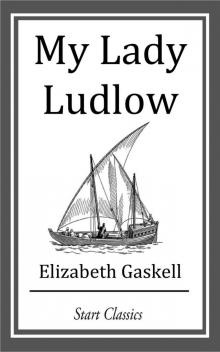 My Lady Ludlow
My Lady Ludlow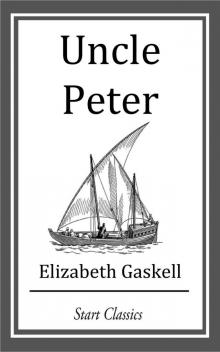 Uncle Peter
Uncle Peter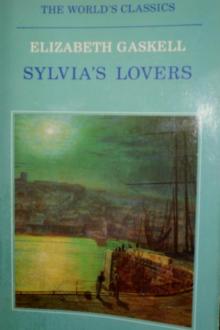 Sylvia's Lovers Elizabeth Cleghorn Gaskell
Sylvia's Lovers Elizabeth Cleghorn Gaskell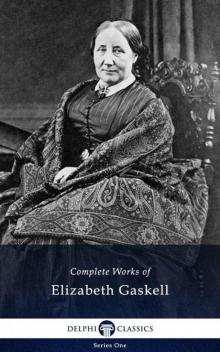 Delphi Complete Works of Elizabeth Gaskell
Delphi Complete Works of Elizabeth Gaskell The Grey Woman
The Grey Woman The Old Nurse's Story and Other Tales
The Old Nurse's Story and Other Tales Cranford
Cranford Gothic Tales
Gothic Tales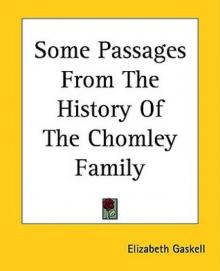 Some Passages From the History of the Chomley Family
Some Passages From the History of the Chomley Family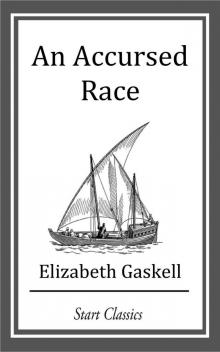 An Accursed Race
An Accursed Race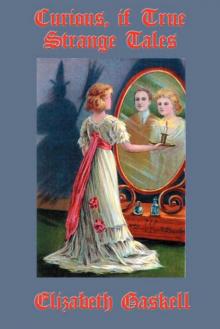 Curious, if True: Strange Tales Elizabeth Cleghorn Gaskell
Curious, if True: Strange Tales Elizabeth Cleghorn Gaskell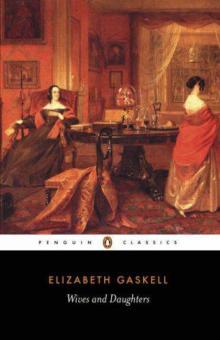 Wives and Daughters
Wives and Daughters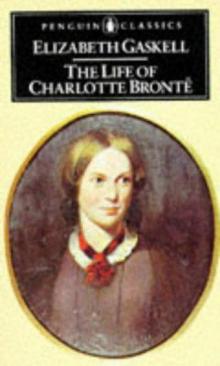 The life of Charlotte Brontë
The life of Charlotte Brontë